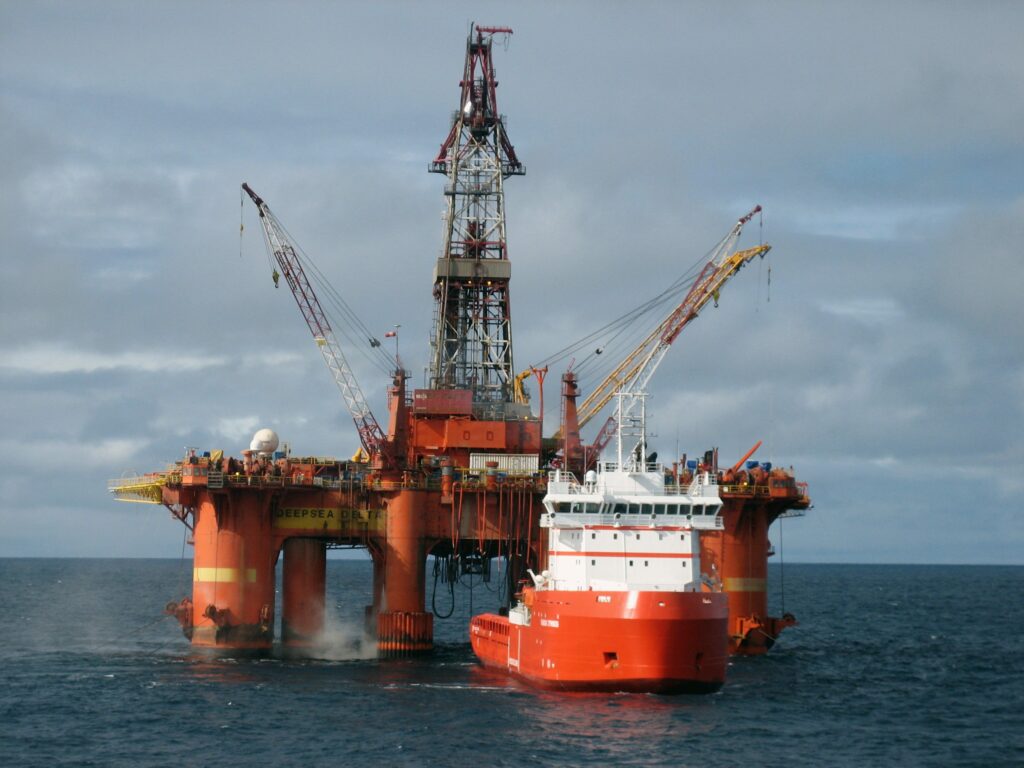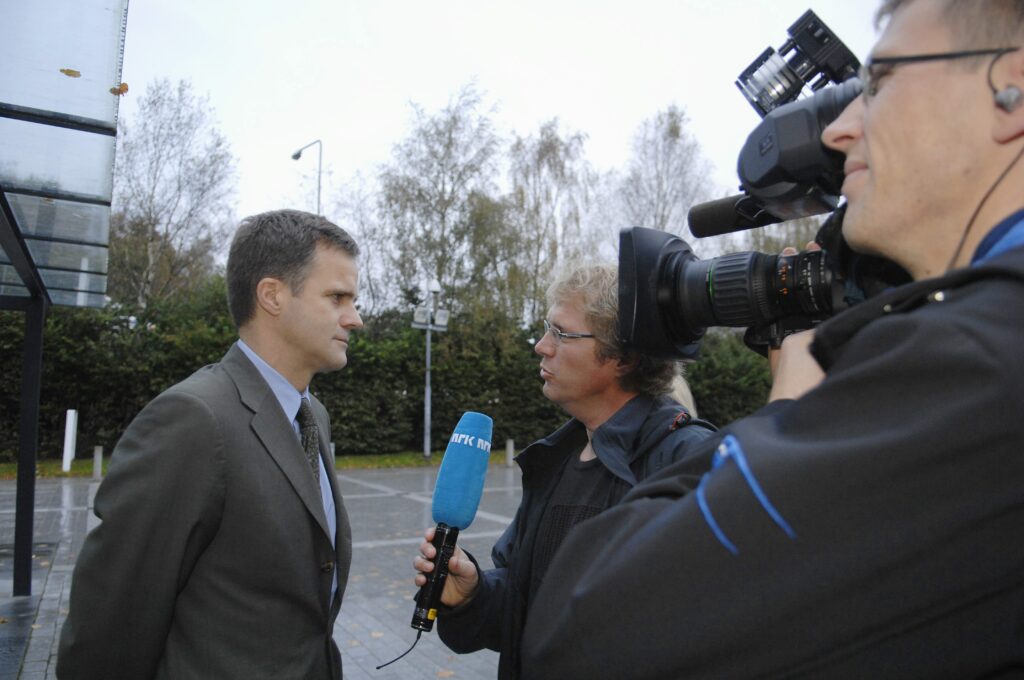Merger with Hydro – an expected surprise

This reorganisation largely took place in 1999-2007.[REMOVE]Fotnote: This article builds to a great extent on Boon, Marten, 2022, En nasjonal kjempe. Statoil og Equinor etter 2001. Universitetsforlaget, chapter 5 (StatoilHydro); see also, for example, Lie, Einar, Myklebust, Egil and Norvik, Harald, 2014, Staten som kapitalist. Rikdom og eierskap for det 21. århundre, Pax. During these years, three Norwegian oil companies of varying size – Saga Petroleum, Hydro and Statoil – were reduced to one large enterprise. After Saga had been divided up between Statoil and Hydro in 1999 and Statoil had been partially privatised in 2001, substantial forces worked for and against uniting Hydro’s oil and gas business with Statoil.
One company or two?
In the years leading up to 2006, when the merger issue really came into its own, several of Statoil’s chief executives and chairs had devoted attention to it. To the extent that positive comments on and soundings about a possible amalgamation reached the public, they were frequently met with strong opposition. An important reason for this scepticism was that a merger would conflict with the guidelines for organising Norwegian state and private interests in the petroleum sector. Formulated during the early years of the oil industry in Norway, these prescribed a structure comprising a wholly private Saga, a partly state-owned Hydro and a wholly state-owned Statoil.[REMOVE]Fotnote: See, for example, Lie, Einar, et al, op.cit: 75 f. Viewed from that perspective, a single big Norwegian oil company represented an undesirable scenario.

Among its proponents, amalgamating the two companies was regarded as the only sensible solution. An important argument was that the politicians had approved a partial privatisation of Statoil which aimed to make it internationally competitive. Size and financial muscle were important elements in this respect. To achieve this, Norway should not have several oil companies which competed with each other. From that viewpoint, such domestic competition stood in the way of competing abroad.
Competition and coordination – Shtokman
Where the merger supporters were concerned, the issue which most clearly illustrated the challenges of operating internationally with two oil companies was the fight over Shtokman in the Russian sector of the Barents Sea. This giant gas discovery is two-three times larger than Norway’s Troll field.[REMOVE]Fotnote: Boon, Marten, op.cit.: 190. That therefore made the area extremely attractive to foreign companies. Hydro had been involved in development efforts there since the 1990s, while Statoil entered the fray in 2003/2004.
The problem for the two Norwegian companies was the uncertainty about whether one or both of them would be selected by Russian energy company Gazprom to develop and operate the field. If only one was chosen, it would mean drastic changes to the balance of strength between them.[REMOVE]Fotnote: Ibid: 195.
With Labour’s Jens Stoltenberg back as prime minister from the autumn of 2005 after four years in opposition, the companies received increased political support for a coordinated approach to the Shtokman issue. In a letter to Gazprom CEO Alexey Miller in January 2006, Helge Lund and Eivind Reiten – his opposite numbers at Statoil and Hydro respectively – requested that their two companies be treated as a single bidder in the fight over the giant field.[REMOVE]Fotnote: Ibid: 196.
Who takes the initiative?
Despite such collaboration, Shtokman highlighted the challenges faced when two Norwegian oil companies were interested in the same foreign project. But it was difficult to envisage a political initiative being taken to bring about a merger. Nor was the Statoil leadership headed by Lund in a position to do so.[REMOVE]Fotnote: Ibid: 202. The issue was too sensitive for that. Experience from the failed merger soundings in early 2004 was offputting – talks with Hydro at Statoil’s initiative had been torpedoed by leaks to the press with subsequent criticism from a number of quarters.[REMOVE]Fotnote: On the subsequent (self-)criticism, see Bøe, Arnt Even, “Defensiv Lindbæk tar ansvar”, Stavanger Aftenblad, 4 March 2004: 7; Leader, “Tabbekvoten oppbrukt”, Stavanger Aftenblad, 5 March 2004: 9.
Reiten was responsible this time for taking the decisive step to get merger negotiations going. In addition to uncertainty about Shtokman, Hydro had made poor investments in the Gulf of Mexico. That helped to put the company’s future international involvement with oil and gas in jeopardy, and amalgamating its petroleum activities with Statoil thereby became a highly relevant solution. Stoltenberg, back in office, also proved an invaluable ally.
Bitter experience
The failure of the earlier merger soundings taught Lund, who took office as CEO in August 2004, that particular attention had to be paid to certain aspects.
One of these was to secure adequate political backing. In the summer of 2006, Reiten had invited Lund to his summer cabin to discuss a merger. That autumn, the pair visited Stoltenberg to secure his support. He was not just anybody in this context. During his first term as prime minister in 2000-2021, he had played a key role in securing acceptance for a partial privatisation of Statoil. Unsurprisingly, he also gave the merger project his wholehearted support.[REMOVE]Fotnote: Boon, Marten, op.cit: 203.
Another important lesson was the need to be conscious of the balance of strength between the companies. A key reason why the 2004 soundings failed was strong internal opposition in Statoil because the company was in a weak negotiating position. That was in part because a permanent successor had still not been appointed to Olav Fjell, who had to resign as CEO in the autumn of 2003 after a corruption case in Iran. Concerns that Hydro might have a dominant role in a merged company with regard to the CEO (Reiten) or head office location (Oslo) made it difficult to negotiate, even without having to deal with leaks to a critical public.
Despite having a strengthened Statoil, which had long had a permanent CEO in place following Lund’s appointment, it was very important for the company’s management to keep the merger talks secret. That was achieved.
Merger

Just over 10 months after it had been announced, the merger was implemented with the creation of StatoilHydro.
Lund became CEO of the new company while Reitan took over as chair while remaining CEO for the remainder of Hydro. However, he had to resign within a few days because of discussions about the latter company’s role in another corruption case, this time in Libya.
At 31 December 2006, Statoil had a presence in 34 countries and 25 435 employees.[REMOVE]Fotnote: Annual report, 2006, Statoil: 6. (References to annual reports in this text refer to the Norwegian edition of the reports.) The merger with the Hydro division increased this to 40 countries and roughly 29 500 employees.[REMOVE]Fotnote: Annual report, 2007, StatoilHydro: 6. There is therefore little doubt which was the dominant party.[REMOVE]Fotnote: Out of respect for Hydro’s long history, stretching back to 1905, Lund and Reiten agreed to call the process a merger or amalgamation rather than a takeover. See Boon, op.cit: 202; Colman, H L, Stensaker, I and Tharaldsen, J E (eds), 2011, A Merger of Equals? The Integration of Statoil and Hydro’s Oil and Gas Activities, Fagbokforlaget.
The merger had created a company with bigger opportunities to compete abroad. At the same time, it became a very dominant player on the Norwegian continental shelf and a powerful customer for the supplier industry. The question was how the company would balance national interests with international ambitions in the time to come.
arrow_backSeabed separatorThe UK – not just any foreign countryarrow_forward